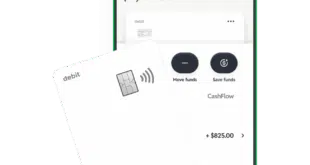Embedded payments are quickly becoming table stakes as developers look to expand their reach to merchants and small businesses.
It’s no wonder embedded payments are quickly moving into the mainstream. After all, small and mid-size businesses are increasingly looking to deliver better and better experiences for for customers within their app or software platform.
For these merchants, embedded payments provide consumers the ability to pay without being redirected to a third-party site at checkout. It’s meant to be a simple, streamlined process that speeds the purchasing process, reduces friction, and improves customer satisfaction by embedding the purchase within the act of shopping.
What’s more important, embedded payments—a term for payment solutions natively built into an app developer’s or fintech’s software—are said to give merchants more control over payments flows. That’s because they can embed payment capabilities across a variety of digital touchpoints beyond the merchant’s app. Such touchpoints can include micro-stores on a social media site, a marketplace, or within an email.
Restaurants, for example, can embed payments in their online ordering and delivery systems, while retailers can weave payment capabilities into product pages.
To enable embedded payments, consumers need only enter their card- or bank-account information once. With this information stored in the app, it is automatically billed each time the consumer clicks the app’s pay button. Payment-related friction is said to be minimized as the interaction required to complete a transaction is reduced.
It’s a recent trend (“The Rise of Embedded Payments,” January), but embedded payments are now fast penetrating merchant categories that the digital revolution previously couldn’t reach. “By freeing transaction enablement from processing, payments can be incorporated into workflows and processes that were previously unable to incorporate payments,” says Thad Peterson, a strategic advisor at Datos Insights, a research and consulting firm.
Fighting Friction
The mobile apps from Netflix and Uber represent two examples of what Peterson is referring to. Netflix customers, for example, can link their payment details directly to their account, which spares them from having to enter payment information each time they need to renew their subscription.
Meanwhile, Uber customers who have stored their payment information need only open the Uber app, enter a tip for the driver, and click the pay button.
Other potential applications for embedded payments include payments for parking from within a map application, such as Google Maps, and enabling purchases of avatar enhancements within iGaming apps.
“The momentum behind embedded payments is being driven by the customer experience and the need to reduce friction around digital commerce,” says Todd Pollak, chief revenue officer at Oakland, Calif.-based Marqeta Inc., a card-issuing platform. “Merchants and businesses are realizing that, with embedded payments, they can take control of the payment experience and own all aspects of the customer’s experience, rather than leaving payments to a third party.”
Redirecting consumers out of an app to the merchant’s processor to make a payment adds another step to the payment process which increases the time it takes to complete the transaction, even if it means only a few seconds.
It can further increase friction as consumers may be required to enter their payment credentials each time they make a purchase, as opposed to having their credentials saved in-app. With embedded payments, the entire customer experience takes place under one roof, which proponents say helps boost customer loyalty.
“Reduction of friction is a core reason for embedding payments. To us, that means payments with no re-directs whatsoever, irrespective of the number of beneficiaries in the flow of funds,” says Hersh Mansukhani, vice president of platforms and embedded payments at Fiserv Inc.’s Carat commerce platform.
Reducing friction at checkout is a big deal, but another key reason fintechs and app developers are embedding payments into their platforms is that the technology gives their platforms a competitive advantage. A recent survey by BlueSnap Inc., a payments-platform provider that supports embedded payments, reveals that 48% of the executives at platform providers that support embedded payments say the move has given them an advantage over their competitors.
In addition, 35% say including embedded payments in their platform increases client retention, while 34% reported an increase in new clients. The survey, conducted by Gartner Peer Insights, was based on interviews with 300 executives at fintech and software providers globally.
The ‘White Label Model’
“With embedded payments, platform providers can [more effectively] reach the mid-market,” says BlueSnap chief executive Ralph Dangelmaier. “Most platform providers serving the mid-market are not really in a position to build the piping needed to become a payment facilitator or payment service provider. Baking payments into their platform gives them a long runway to service this market.”
Payment facilitators allow customers to accept electronic payments using their platform through a master merchant account. Examples of payfacs include Block Inc.’s Square merchant-processing unit and Stripe Inc. Now, payfacs have become a key technology provider for embedded payments.
“Think of it along the lines of the Amazon Web Services model. It’s cheaper to buy the infrastructure from a company like us than it is for them to build it on their own,” Dangelmaier says. “Plus, the cost to get licensed as a payment facilitator is a barrier in itself [to many platform providers]. That alone makes the white-label model for embedded payments a no-brainer.”
There are some 1,600 vertical markets where app developers and platform providers are now embedding payments through payment facilitators to improve the customer experience, according to Todd Ablowitz, co-founder and co-chief executive for Infinicept, a major technology provider for payfacs.
“A lot of software companies are looking to own payments, but in general, payments are hard to do, and many software companies tell us they are not yet ready to be a payment facilitator on their own,” Ablowitz says. “We provide a pathway for software companies to become a payfac even though they may not be ready to become a payfac right now, and may never be ready.”
The “as-a-service” model has significantly changed the economics of embedded payments for software developers, which is accelerating adoption of the embedded option. “Cloud computing has significantly lowered the cost of entry to embedded payments for software companies, and in many cases the solutions quickly pay for themselves,” says Marqeta’s Pollak.
Nevertheless, the cost of entry to embedded payments varies by use case, especially as the technology around embedded payments changes. “New technology always needs to be supported, and while it is becoming more efficient to enable embedded payments, that doesn’t necessarily mean the cost of the technology is going to be lower, especially as needs expand on a case-by-case basis,” Dangelmaier says.
Another benefit for software developers from embedding payments is that it opens the door to additional revenue streams, such as fees earned through embedded financial services, such as in-app lending services and in-app buy now, pay later loans.
“Many software companies earn subscription revenue directly from their customers, but what if they could capture additional revenue every time their customers make a sale or pay a supplier,” says Lexi Fox, chief marketing officer and co-founder at Maast, a wholly owned subsidiary of Synovus Bank that provides embedded finance. (The company’s name stands for Money-as-a-Service.)
‘One Click to No Click’
More advanced embedded-payments solutions also offer business-banking services seamlessly from software-as-a-service (SaaS) platforms. This makes embedded payments the foundation for broader embedded-finance solutions.
“The technology will continue to push the edge of what’s possible to help software providers unlock new revenue streams while providing powerful new solutions to their customers,” says Fox. “An end-to-end financial services strategy can help create value for your customers by making the right products available at the right time, and by making those products easy to consume.”
With new types of tender and more digital channels offering the ability to make purchases also emerging, the complexity of the payment ecosystem is only expected to increase over the next few years.
Such a scenario bodes well for embedded payments, observers say, as it enables software developers and platform providers to offer the technique to merchants despite the increasing complexity of the payments landscape, according to Peterson.
“The value [embedded payments] can provide customers and the merchants that offer them is significant, particularly on platforms and within marketplaces,” Peterson says in a report entitled “Embedded Payments: The Next Step in the Evolution of Payments.” “The migration from one click to no click is a milestone in the evolution of payments, and merchants will find new ways to use the capability to generate incremental sales and increase customer satisfaction.”




